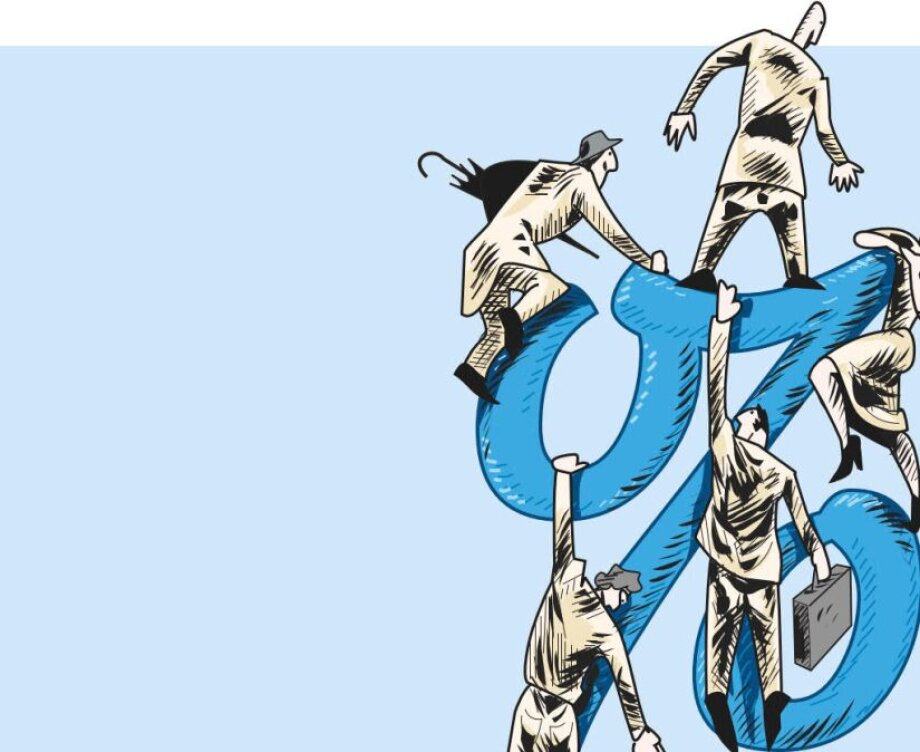FASTER THAN EXPECTED
The Polish economy is emerging strongly from the pandemic faster than expected. It is ready for a rebound to the pre-Covid boom. However, it is running too hot for the liking of decision-makers, including Jarosław Gowin, deputy prime minister, who sees high inflation as undesirable for Poles' savings.
Despite the sudden shock, Poland weathered it better than its neighbors and emerged relatively unscathed than most countries in the EU from its first economic depression in three decades. No mean feat, though, following the same monetary and fiscal policies of major economies. The Polish government pumped 9% of GDP as a stimulus into the economy. The country’s central bank, NBP, slashed rates and bought government bonds to combat the effects of shutting down the economy. That helped exports with a weak złoty and relatively stable unemployment rates and prevented the economy from a total crash. However, public debt and inflations seem to be a growing concern as Gowin said in a recent interview with Bloomberg: "It's a delicate issue which should be solved independently from the government. In respect to economic growth, for the purchasing power of the income of Poles and care for their savings, excessive inflation is not desirable."
SOLID OUTLOOK
The Polish economy performed better than expected and expanded every quarter, as 1Q21 GDP growth arrived at 1.1% q/q (seasonally adjusted), translating to -0.9% y/y. Household consumption growth returned to positive territory and increased by 0.2% y/y, while investments surprised the upside and came in at +1.3% y/y. Poland's GDP is expected to rebound by 4.8% in 2021 and 5.4% in 2022, thanks to rising consumer confidence and better than forecasted labor market condition translating into positive growth of private consumptions. Additionally, investment spending that turned positive earlier than expected, supported further with the funds available within the Recovery and Resilience Fund (RRF) program, will solidify a positive outlook for the economy starting from 2022, with the highest inflow planned for 2023-2025. However, the uncertainties around the Polish Deal and tax reforms could, if increased, hinder household spending next year and create an environment that discourages both foreign and local private investments.
‘IT IS TRANSITORY’
Poland's Monetary Policy Council turned a blind eye to its inflation target. Headline CPI neared the 5% outside of the tolerance band of the MPC of 2.5% +/- 1%. It jumped to 4.8% y/y in May 2021, mainly driven by a surge in fuel prices. Economists see the inflation averaging 4% this year with a risk of even a higher rate due to a sudden increase in private spending and supply-side bottlenecks. However, the MPC and the president of NBP have called it transitory. Forecasts read that the rate will continue to be elevated around the current level. The 5Y inflation average will reach NBP's target of 2.5% in September 2021, while 5Y core inflation will reach that target in Apr 2022, justifying policy normalization anytime between 4Q21 and 1Q22. The question is, will NBP change its dovish rhetoric of considering the rate as of a transitory and exogenous nature, thus, calling out the matter as outside and ruling out any normalization in the near term? In contrast, central banks in the neighboring countries of Czechia and Hungary are expected to normalize the rate as soon as June. In 2Q21, the 2Y rate reached 0.4%, 10Y yield is likely to be above the 2% mark at the end of the year. Regardless of NBP playing its next card, the expectation of monetary tightening by tapering the asset purchases program affecting the short end of the curve could explain the bond market's upward move.
FOREIGN TRADE: STRONGER ZŁOTY AHEAD
Foreign trade turnover in 1Q21 in exports at current prices amounted to PLN 298.8 billion, while in imports PLN 287.9bn. The positive balance reached PLN 10.9bn compared to PLN 4.3bn a year earlier. Compared to the corresponding period of 2020, exports increased by 14.6%, while imports by 12.3%. Germany, France, and Czechia are the top three trading partners for exports. On the other hand, Germany, China and Italy are the leading three suppliers, according to a May report from Statistics Poland (GUS).
More robust economic fundamentals, high inflation and expectation of monetary policy normalization lead to a more desirable złoty outlook versus euros and US dollars. Despite the Supreme Court ruling regarding CHF loans, the market didn't fully impact the złoty against the euro moving the exchange below 4.50. As high inflation will warrant a monetary normalization, a hike in the NBP's rate by 15 basis points is expected by November. We might see the exchange moving toward 4.42 by the end of the year and 4.35 by 2Q22. Furthermore, if the US Fed continues its current monetary policy, we might see the złoty appreciate by 2.2% by year-end and 3.5% by 2Q22.
RISING EMPLOYMENT AND AVERAGE WAGES
Poland's unemployment rate in April 2021 fell to 6.3% from the 6.4% level recorded in the previous month and registered a 6.1% in May.
There’s a slight decrease in average paid employment in the enterprise sector compared to a month earlier (by 0.2%) due to a reduction in part of full employment, end of fixed-term or termination of contracts as a result of shutting down of businesses. The latest report from GUS recorded a slight increase in average paid employment by 0.9% for the first time in a year. The report also noted a decrease of average gross wages and salaries by 2.1% in April 2021 compared to March 2021. However, average gross wages and salaries increased by 9.9% y/y, which is faster than that observed in previous months y/y. In the cumulative period of four months of 2021, compared to the same period a year earlier, average gross salaries grew by 1.5% in the arts and entertainment industry and 11% in agriculture, forestry and fishing.
FAST FORWARD
According to GUS, the general business climate indicator in May is higher than the previous month in most of the sectors. However, the most pessimistic assessments are noted among companies from the hospitality sector. At the same time, communications and IT lead the way in a favorable business climate. However, the uncertainties around the "Polish Deal," especially when it comes to a potential tax hike, could become a headwind for sectors of the economy that are already fragile and are in recovery mode following the pandemic. The value of złoty, inflation and monetary policy are also other risks. We know that the interest rate has to normalize following an overheated economy and high inflation but that means stronger złoty and higher financing costs. Both aren't positive for an economy where half of its GDP relies on exports and cheap debt that funded the government budget to face the pandemic and shield businesses during 2020 and 2021. When it comes to the labor market, there is an urgent need to drive efficiency and invest in the peripheral employment hubs away from the traditional cities of Warsaw, Krakow, Katowice and others. Otherwise, high salaries and social contribution anticipated in the new deal could push employment further east, particularly in the service sector.
















